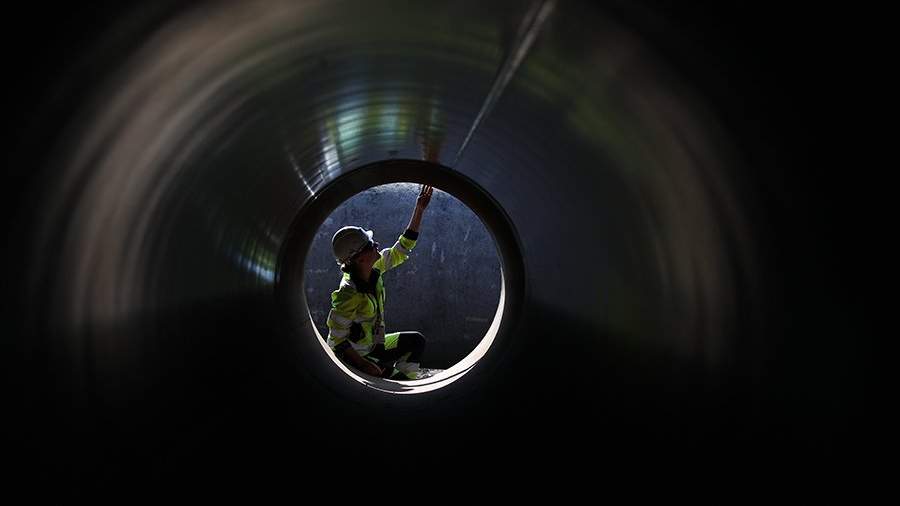
Middle East conflict drives European gas prices higher
By Rhod Mackenzie
On Friday, 27th October 2023, gas prices in Europe saw only a slight change based on the felling that thre are sufficient supply levels and a prediction of warm weather in the region. However, prices remained close to the year's peak. Interestingly, the weather seemed less significant to European politicians when compared with Ukraine's refusal to continue transiting Russian gas supplies.
Thus, the Director of Ukrainian Naftogaz, Alexey Chernyshev, stated last week that Kyiv would not continue the gas transit agreement with Russia. "We will not initiate this transit any further. The contract will be concluded, and the transit will cease," he pledged.
As per Chernyshev, Ukraine presently doesn't require gas imports from Russia and transit is solely facilitated to assist EU nations, specifically the landlocked ones. He reminded that the European Union aims to quit the usage of Russian gas by 2027. According to him, Kyiv desires to expedite this process as much as possible and plans to "accelerate" Europe.
As reported by Gazprom, the requests for transferring Russian gas to Europe through Ukraine and the Sudzha gas measuring station equal to 42.4 million cubic metres per day. The contract for the transit of Russian gas through Ukraine terminates on December 31, 2024.
Gas prices at the European TTF centre are currently at this year's peak, surpassing £400/1000 cubic metres, notes Ekaterina Krylova, analyst at the PSB Analytics.The surge in prices can be attributed to the present situation in the Middle East and the potential for it to escalate.
The analyst states that gas exports to Egypt have ceased from the Mediterranean field near the Gaza Strip, which in turn supplied Europe. Although Egypt's portion of global gas supplies is minor, the conflict risks expansion, and if Iran intervenes, it may block the Strait of Hormuz, impacting the supply of Qatari LNG.
Concurrently, Gas Infrastructure Europe reports that European gas storage facilities are nearly full at 98.7%. "The projected drop in temperature at the start of December is likely to increase demand for raw materials during the 'heating season," asserts Ekaterina Krylova. "In addition, geopolitical risks will maintain high prices."
In contrast to Europe, gas prices in the United States have surged, fueled by forecasts of colder weather. Natural gas futures approached £2.61 per therm, a level last seen in January due to forecasts of increasing demand and decreasing stockpiles. Temperatures in the Pacific Northwest of the United States have been below the average for multiple days, highlighting the seasonal instability. Meteorologists previously predicted that weather in the lower 48 U.S. states was expected to be significantly colder than anticipated from late October to early November, leading to heightened demand for gas-intensive heating.
Shortage or New Route
The market responded to the news that Ukraine has no intention of extending the contract for the transit of Russian gas to the EU after 2024 with a slight increase in quotations this morningg. Despite the situation, volatility has remained within normal dynamics, stated Igor Galaktionov, an analyst at the BCS brokerage. The head of Naftogaz's statement is not a significant price catalyst, and provides a broad range of options, meaning that supply can continue beyond 2024 if needed.
According to financial analyst Alexander Solovyov of the Finmir marketplace, futures quotes for Dutch gas (the European benchmark) have slightly decreased by 0.51% and are currently at 50.550 euros per megawatt/hour. The level has remained nearly constant for the second week in a row. Following an increase in quotes of over 30% due to the beginning of the Middle East conflict, it is likely to remain unchanged. Nevertheless, without significant changes to the geopolitical situation, the current load on the pipeline through Ukraine is currently about 15 billion cubic metres per year according to the analyst.
This equates to less than 10% of the maximum flow calculated at 178.5 billion cubic metres per year. "Russian gas flows to Central and Western Europe through this pipeline. According to Alexander Solovyov, the completion of the gas pumping in a year could either significantly escalate the issue of another gas shortage in Europe and result in an increase in its price or result in the preparation of reserve routes for European consumers."
